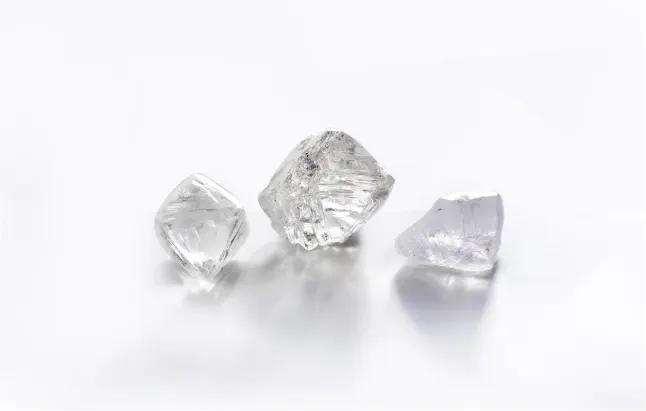The (Ultimate) Guide to Diamond Shapes
A diamond is only a clear piece of rock until the right cut comes along. By choosing a cut that was destined for that stone, it becomes the diamond it always wanted to grow up to be. However, with so many options, how do you know what style to go for and what to look for when it comes to clarity and color? Well, there are different expectations for different cuts. So here’s a great guide to break it all down for you. Easy-peasy (diamond-squeasy? No? Okay. Moving on…)
Before we go into all the cuts let's refresh on some useful vocab:
Fire: Or dispersion, refers to the rainbow sparks of color you see reflecting in the diamond.
Brilliance: Is the white flashes of light returned.
Scintillation: This adds balance to the stone, so some facets are light while others are dark, almost like the facets are blinking.
Modified: This means that the original shape (square, round, etc) has been slightly altered to its new and improved shape.
(The pictures used for examples are the worst of the worst, and best of the best, so finding something in between is usually okay!)
Round:
The Round Brilliant (RB)
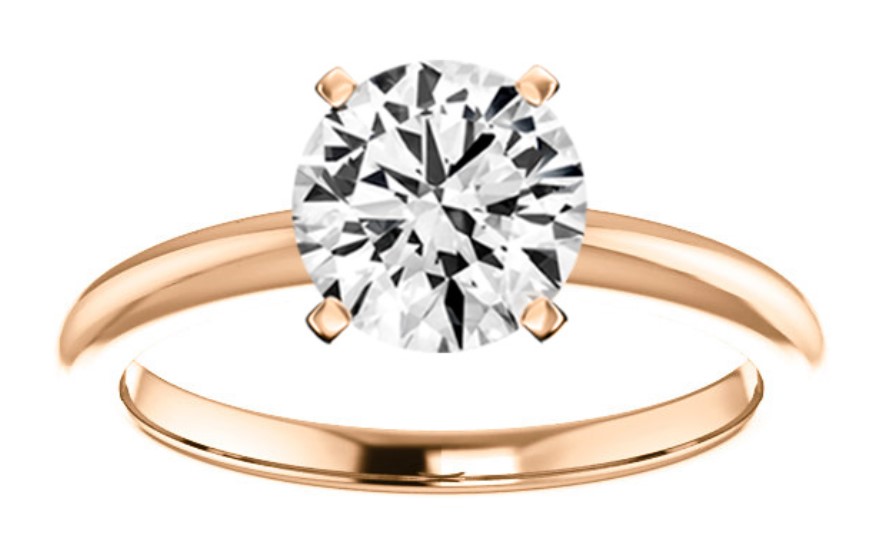
The round brilliant is the most popular cut, over 75% of all diamonds sold are RB’s. This is due, in part to the classic, timeless look and the amazing brilliance that the cut offers the stone. This comes from how the facets are placed on the stone.
RB’s have a total of 57 facets (the flat parts around the diamond) - 53 on the crown (above the middle) and 25 on the pavilion (below the middle). The amount of reflective facets allows the fire and scintillation to really shine. Overall, it's the classic of all cuts - It looks perfect whether at a quarter-carat, 8-carat or any size in between and beyond.
Since a RB has so many facets and that means so many reflections, it's easy to not notice as many inclusions because the scintillation will hide some of them. This means you don’t have to find a flawless, colorless diamond to get a great stone out of it. With all the fire going on too, you won’t notice if the color is a few levels below colorless. Saves you some bucks.

Fancy Cuts:
(This term is going to apply to any diamond that is cut in a shape other than the round brilliant. While you might think oval is boring, it’s actually fancy)
Oval:
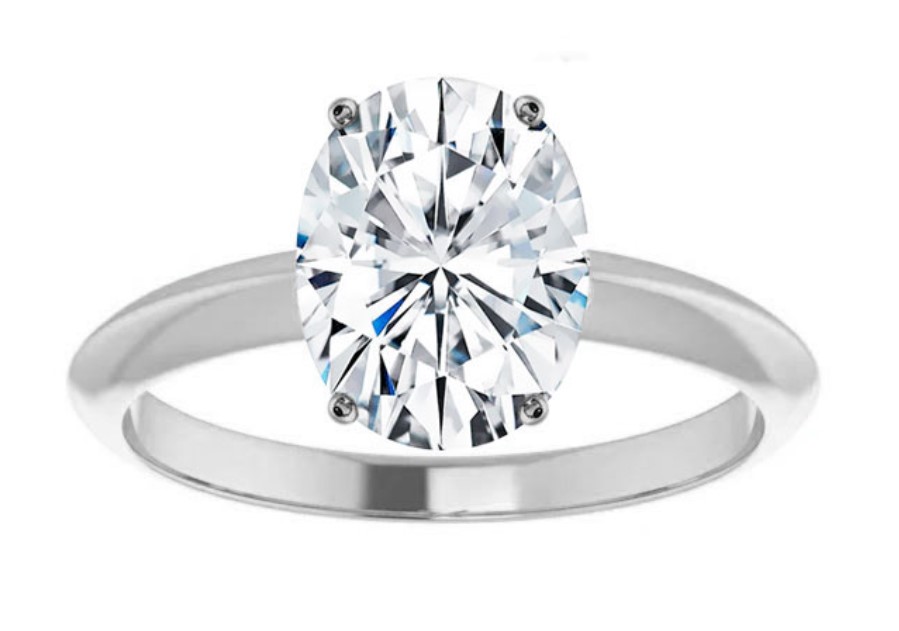 This is a modified version of the round brilliant cut - meaning it has all the shine of a RB, but in an oval shape. This elongation gives it a few desirable qualities, it has the fire and brilliance you want in the glitzy rock, and the oval shape gives the appearance of the stone being bigger than it actually is, so you don’t have to find as big of a diamond to be as impressive. It's classy, and a little different, but not too out of the ordinary.
This is a modified version of the round brilliant cut - meaning it has all the shine of a RB, but in an oval shape. This elongation gives it a few desirable qualities, it has the fire and brilliance you want in the glitzy rock, and the oval shape gives the appearance of the stone being bigger than it actually is, so you don’t have to find as big of a diamond to be as impressive. It's classy, and a little different, but not too out of the ordinary.
While this cut was first produced in the 1700s, it really became popular in the 1950s, so a lot of these cuts are vintage inspired. This style is impressive both in a solitaire setting or with accent stones.
This cut also has the same amount of facets as the RB, at 58 (including the culet, the flattened point on the bottom)
An oval cut really has about the same expectations in color and clarity need as a RB, you don’t really HAVE to have a colorless, flawless diamond with this shape but be mindful about where these factors show up.
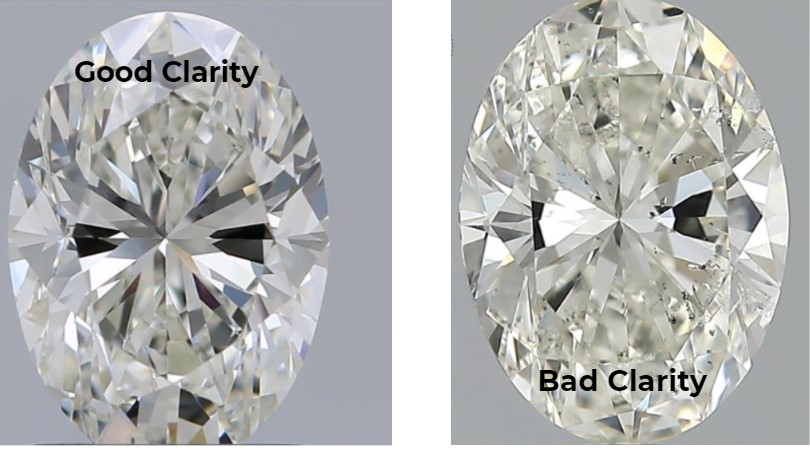
Pear
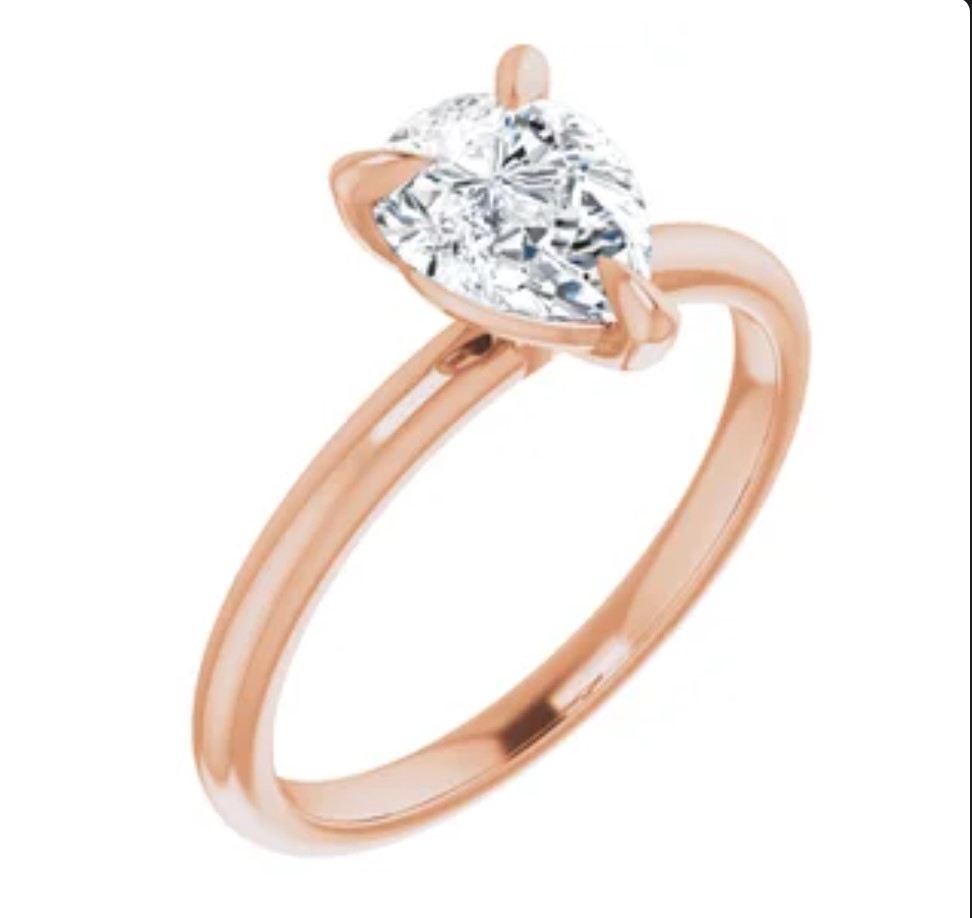
Ah, the understated yet impressive, vintage yet modern, classy yet subtle - pear. No matter what setting, this cut is a classic showstopper.
The pear is a modified mix of a round brilliant and marquise cut. Traditionally this cut is worn with the point facing towards the wearer, but it's a modern look to face it the other way. This is another cut that you can find that looks bigger than the actual weight of the stone, due to its elongated shape.
There are 58 facets in a pear cut (not surprised? There’s a trend here.)
Since the pear has fewer facets on its pointy end than a RB does all the way around, this is really the place you want to pay attention to when looking for inclusions. Its easier to spot them towards the tip, because there is less reflection to hide them. So just keep that in mind, but color is not going to be as much of a deal-breaker here.
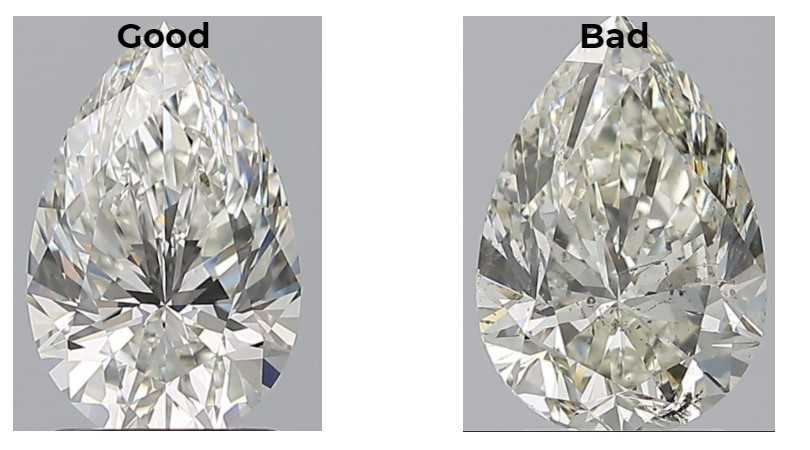
Marquise
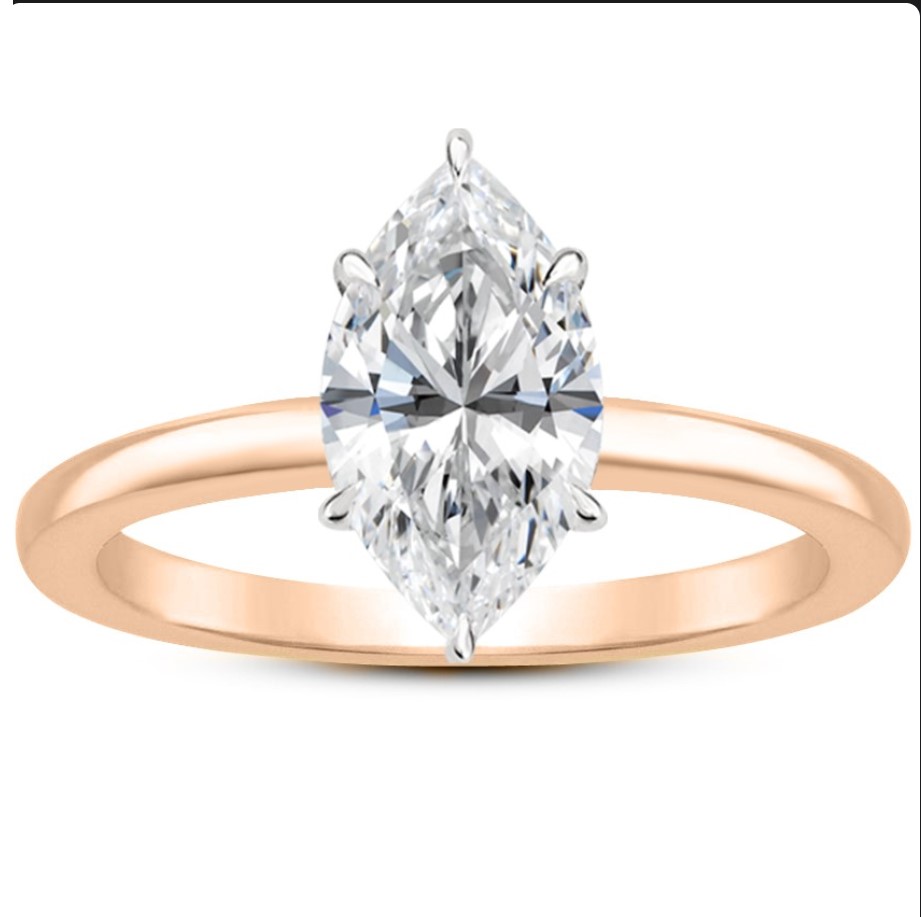
The peak of the marquise’s popularity was between 1960 to the 1980s. You probably know a grandma or two (or literally all of them, right?) who had this cut in their wedding set. Also sometimes called a “navette” which is French for ship, and you can see why- both ends coming to a point is similar to the shape of a navy boat. A marquise can make a short finger look long, and a thicker finger look slim. This cut also has… drumroll please… 58 facets! The high amount of facets help the scintillation and brilliance shine. While this is a very sparkly cut, this is one you can notice slight color changes in. Usually, this cut has less depth to distract than an RB so look for one with a higher color grade, or at least make sure it's not obvious when choosing your stone.

Square Shapes
Princess
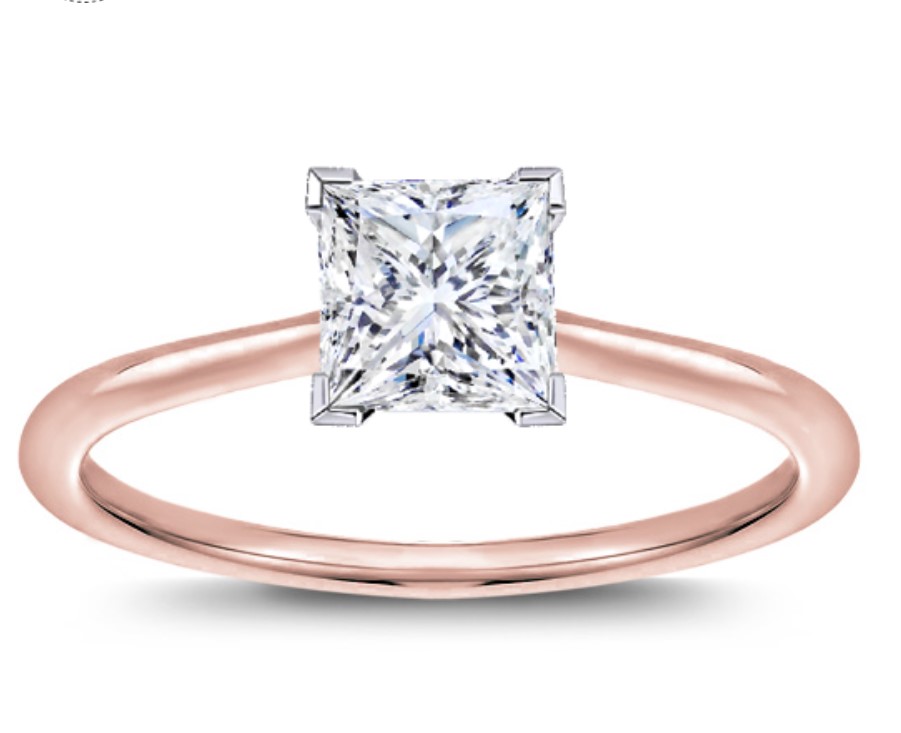
A square or Princess-cut diamond is what we like to call a win-win. Here’s why. Diamonds are naturally found in an octahedron form - this is the shape of two pyramids stacked bottoms together. So a princess cut has the least amount of waste of any other cut. This means that you really get the most diamond for your money. Win #1! Since the diamond is square instead of round, there is more surface area to the stone. This makes it look bigger than the weight it is. Win #2 for you. #SaveTheStoneSaveTheMoney. There are 57 facets in a princess cut.
Color is not a game-changer here, but princess cut diamonds have a large table, so you want to make sure there are no obvious inclusions present in that area.
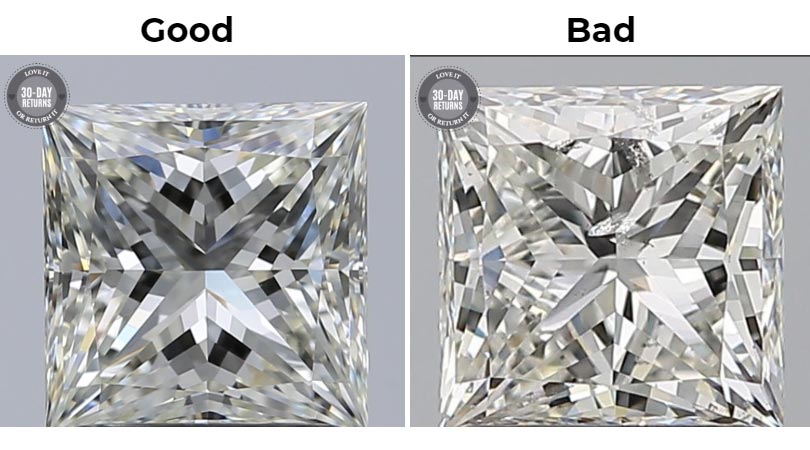
Cushion
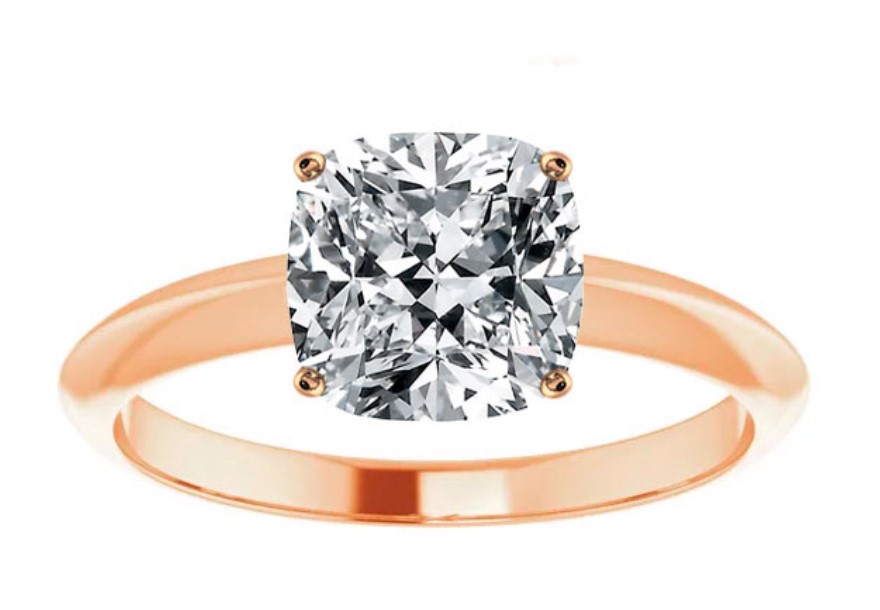
There's a few different versions of this cut but we’ll start with the traditional two - the old mine cut and the modern cushion.
The old-mine-cut is over 200 years old and It has 58 facets making it look a little less refined and a little… well... chunky (yes, the technical term is chunky facets). The modern cushion typically has 64 facets, giving it a slightly more refined sparkle. The Cushion cut can be either square or more rectangle-shaped if it is elongated, but either way has its corners rounded off so its technically an octagon - but that's another discussion. When set in a halo or 4-prong setting it's hard to tell it's not a princess cut, but the sides are more rounded (creating the cushion name, get it?)
There is also another newer cut style: crushed ice cushion. Stay with me here, it's actually quite intriguing. Imagine getting a glass of water and adding crushed ice to it - there's a way cushions are cut that are reminiscent of this visual. This is due to extra facets being cut beneath the girdle (middle) to create more reflections and sparkle. While some are not interested in this look, it also means it's easier to hide inclusions that otherwise would be seen, plus it looks extra sparkly - who doesn’t want a diamond that all it does is glitter?
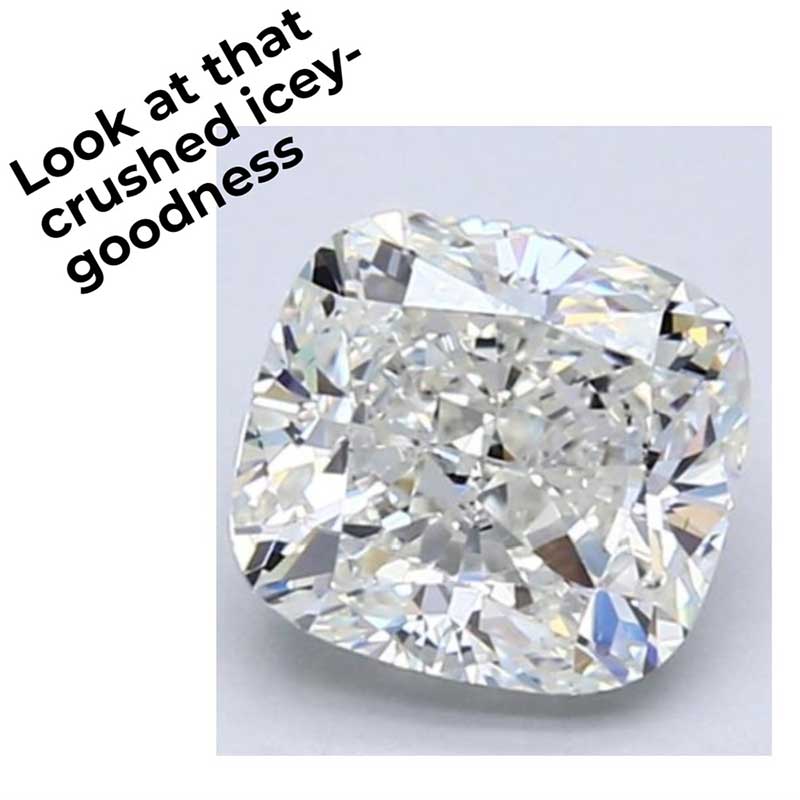
While it sure is reflective, the way the facets are placed there's a slightly more open table on top to see into the stone, so watch for those eye-sore inclusions in this area.
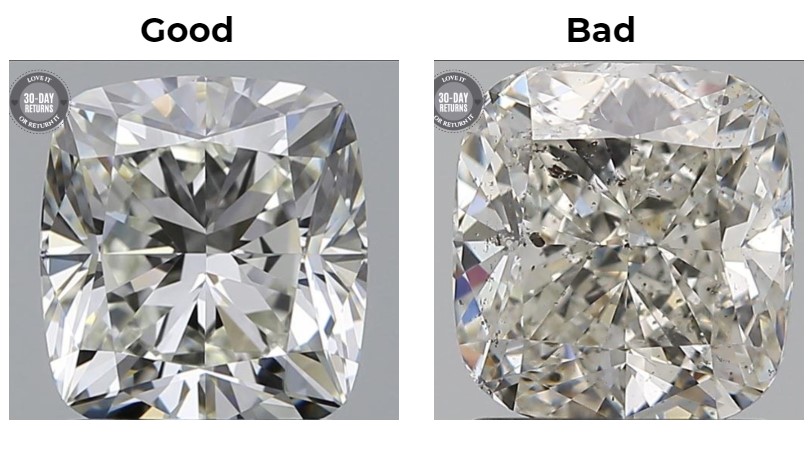
Asscher

The Asscher cut was created in 1902 by Joseph Asscher (hence the name). It is square shaped with the corners cropped off, similar to how the cushion's corners are, but more defined. There are large step facets, (imagine the long facet cuts in an emerald cut) and a high crown. This gives way to something called the “endless hallway of mirrors” effect - it looks like the mirrors are reflecting off themselves into eternity (okay maybe not endlessly but you get the visual).
This gives you an unobstructed view of the center, so it's very important that there are no obvious inclusions that you can see in this area, otherwise that's all you will see and will really bum out your diamond. You want to make sure to find a diamond with a good color and clarity rating, since there are such long facets it's easier to see imperfections and notice an off-color. Asscher cut diamonds have our favorite, 58 facets.
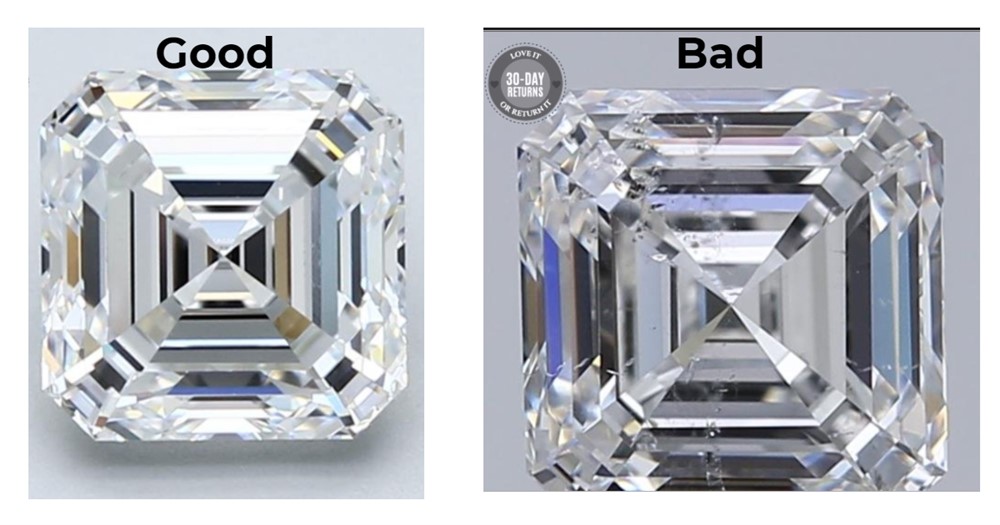
Radiant

It's all in a name, and radiant is a proper one. With 70 (yep, curveball) facets this cut has gorgeous brilliance and scintillation. It can be square to rectangular, although ideally, it is somewhere in the middle. Since it is a little longer on two of the sides, it creates a very pleasing facet appearance. Typically the corners are cropped, but you can find some still with their points.
Since there are extra facets to disperse more light, this is also a cut that can hide inclusions easily. This means you don’t have to pay for a high-grade clarity to get a good eye-clean stone.
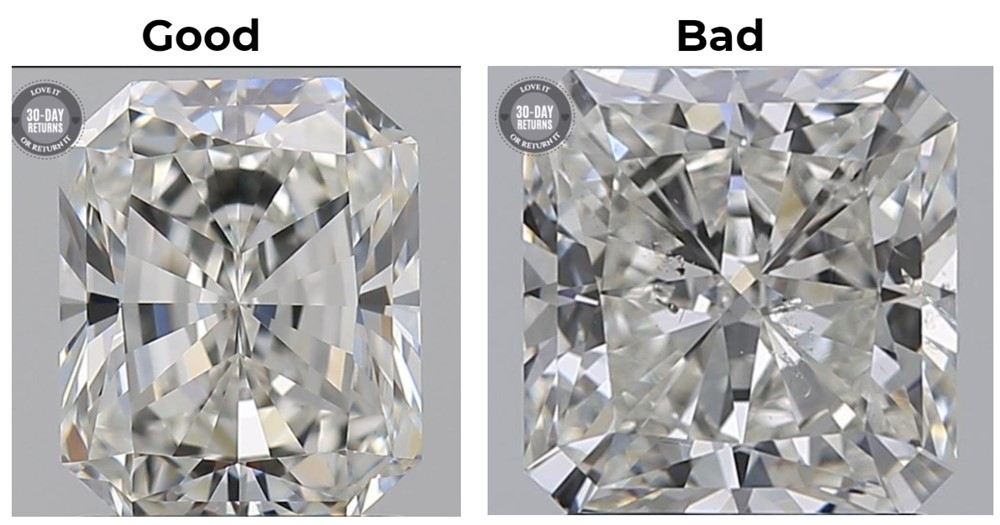
Emerald
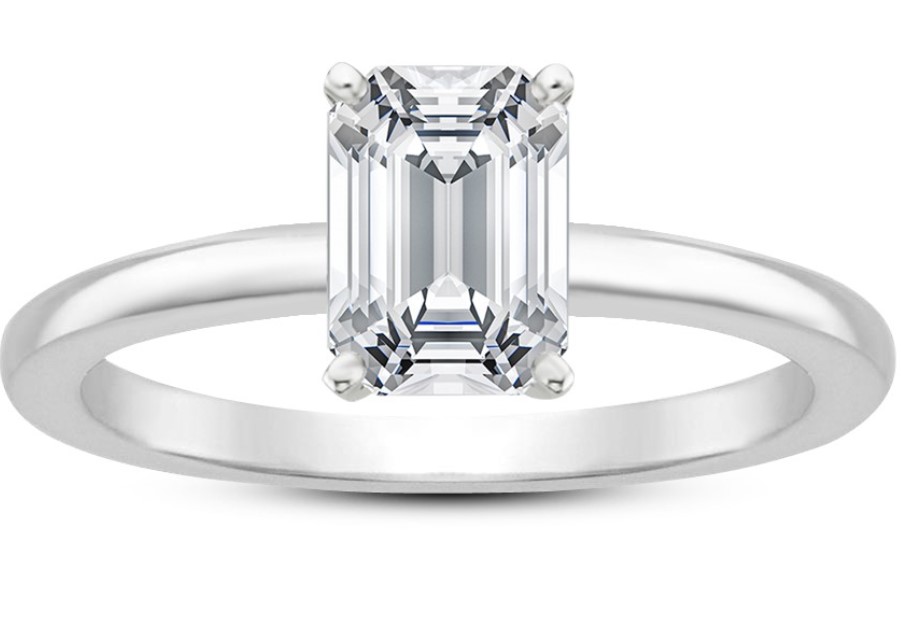
If you think of vintage and art deco, you probably think of this cut. The emerald cut for diamonds became popular in the ’20s and while the popularity died down over time, they are starting to come back. While nowadays an emerald or a diamond can be found in almost any cut style you can think of, back then it was a little more challenging. Originally created in the 1500s, this was the cut style used for -you guessed it- emeralds. They were very hard to cut cleanly because those green beauties are soft stones. So using the long chiseled step facets made it less likely to break during cutting.
You’ll absolutely know this cut when you see it - a very obvious rectangle shape with long, gorgeous facets that shine and reflect to create the iconic shape we know today.
However, as we learned before, the longer the facets the easier it is to see inclusions. With a large open table on top, it creates a large opening to see directly into the stone, so you don’t want any obvious imperfections inside. While the emerald is stunning, it's not very forgiving to those pesky specs. 57 facets for these guys.
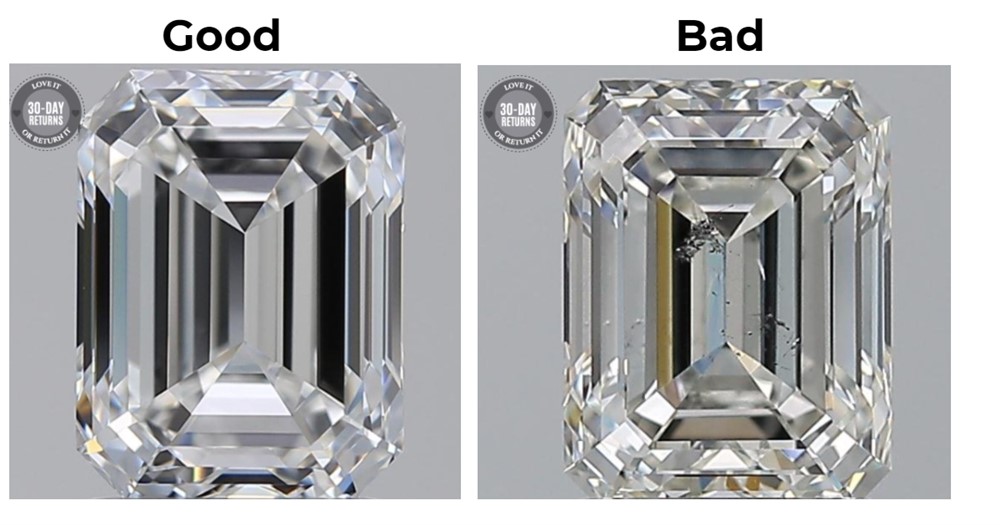
Conclusion
So there you have it - an easy guide to understanding the most common cuts and shapes of the diamond. Now you know what to look for and what to pass on. As always, a good rule-of-thumb is to get the best clarity grade you can find over color if you have to choose. But if that's not an option, you know exactly which styles you can get away with to find an imperfect-perfect diamond for you.
